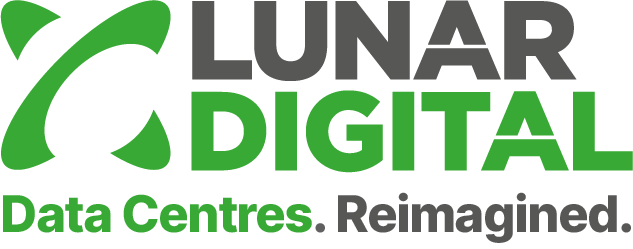
The New Era of Document Intelligence And Why Traditional Tools Can’t Keep Up
Let’s Talk About the Data You’re Not Talking About
When enterprises talk about data, they still default to tables — CSV files, Excel sheets, CRM exports, or ERP logs. That’s the structured world we know. We assume that matching customer IDs, vendor records, and transactions is a tabular problem — one solved by Excel VLOOKUPs, database joins, or, if you’re slightly ahead, fuzzy match algorithms.
But what about:
- A scanned invoice PDF is missing line items?
- A contract with amended clauses buried on page 9?
- An email chain discussing shipment timelines?
- A product catalogue sent in a Word doc with inconsistent descriptions?
- An image of a KYC document shared as a photo?
That’s where the real chaos lives. And where traditional matching tools fail silently.
The truth is this:
80% of business-critical information is unstructured.
And most data platforms are doing nothing about it.
The Invisible Gap: Structured Tools, Unstructured Problems
While structured data matching is common with exact, fuzzy, or probabilistic methods most platforms simply stop when data gets “too messy.”
Here’s what that looks like:
- Invoices with the same vendor name but different layouts get flagged as unrelated.
- Legal contracts with slight wording changes go completely unnoticed.
- Emails with confirmations or price details aren’t even scanned, let alone matched.
- PDF documents from different vendors with near-identical values show up as new entries.
This doesn’t just waste time. It introduces:
- Duplicate entries in financial systems
- Compliance risks in regulated industries
- Delays in approvals or audits
- Inaccurate analytics that misguide business decisions
- And worst AI models trained on wrong inputs
MatchX Changes This — Radically
At its core, document matching is the ability to:
Compare entire documents — not just filenames or metadata
Detect overlaps, near-matches, and changes at the paragraph or sentence level
Extract content using OCR (for scanned images or photos)
Use NLP and AI models to understand what is being said, and how similar it is to previous versions or related docs
It’s not about checking if two PDFs “look” the same.
It’s about knowing if two contracts have semantically equivalent clauses, or if one has a subtle change that creates legal risk.
How MatchX Does It: Under the Hood
MatchX’s Document Matching Engine combines:
- OCR (Optical Character Recognition): To extract text from images, scans, and PDFs
- NLP Models (Natural Language Processing): To break documents into paragraphs, detect meaning, tone, entities, and intent
- Vector Similarity (Cosine Similarity, TF-IDF, Embedding Models): To compare textual blocks based on semantic similarity
- Metadata Matching: Compare timestamps, authors, and document types
- Hybrid Match Scoring: Blends field-level and content-level scores into a final match confidence
And all of it runs in a fully auditable, human-in-the-loop interface, where your reviewers can verify, approve, or override results, with full traceability.
Real-World Use Cases That Go Beyond Tables
1. Invoice Matching in Procurement Systems
Problem: Duplicate invoices from vendors with different formats and layouts, leading to overpayments.
MatchX Solution: Reads scanned invoices, extracts line items, matches vendors & amounts across layouts — flags duplicates with 92% confidence.
Outcome: 25% reduction in payment errors.
2. Contract Clause Tracking in Legal Teams
Problem: Manually comparing long contract versions to find what changed.
MatchX Solution: Paragraph-level semantic comparison flags additions, removals, and intent shifts.
Outcome: 80% faster contract reviews.
3. Email Matching for Customer Operations
Problem: Customer requests or confirmations stuck in inboxes — missed in order processing.
MatchX Solution: Extracts email content, tags relevant entities (order IDs, dates), and matches with CRM entries.
Outcome: Full automation of email-to-action workflows.
4. Insurance Claims Reconciliation
Problem: Matching scanned handwritten forms with typed database records.
MatchX Solution: OCR + fuzzy matching on names, policy numbers, and case details.
Outcome: Reduced manual matching time by 60%.
Why This Matters More Now Than Ever
The volume of documents flowing through businesses is exploding:
- 3.2 billion invoices are exchanged electronically every year
- Over 75% of procurement documents are shared as PDFs or scans
- Contract versions average 5–8 cycles per deal in large enterprises
And most platforms are still matching rows, while your business lives in pages.
You don’t just need record resolution.
You need document-level reconciliation.
MatchX: Built for the Real Data You Actually Have
With MatchX, you don’t need to manually standardise, align, or pre-process your documents.
It works out-of-the-box with:
- PDFs, Word files, emails, scans, images
- Mixed data sources (structured + unstructured)
- 10 rows or 10 million — MatchX scales automatically
- All while giving you confidence scores, approval workflows, and full explainability
And it’s not just document matching.
MatchX also brings:
- Smart Profiling
- AI-powered Cleansing
- Rule Generation via Prompts
- Multi-format Ingestion
- Fuzzy, Exact & Probabilistic Matching
- Relationship & Linkage Detection
- Role-based Lineage & Approval Workflows
- Live Dashboards & Anomaly Alerts
Spreadsheets Had Their Time. Now It’s Document Time.
If your data platform can’t match documents, it can’t match how real business works.
Invoices don’t live in SQL tables.
Contracts aren’t exported in CSVs.
Approvals happen over PDFs, scanned images, and emails.
This is the data layer where MatchX thrives.
So if you’ve ever thought:
“We’re missing duplicates, but we can’t see where…”
“Our contracts are getting harder to track…”
“This form doesn’t match the database record…”
Then it’s time to move past spreadsheets.
And MatchX it.







